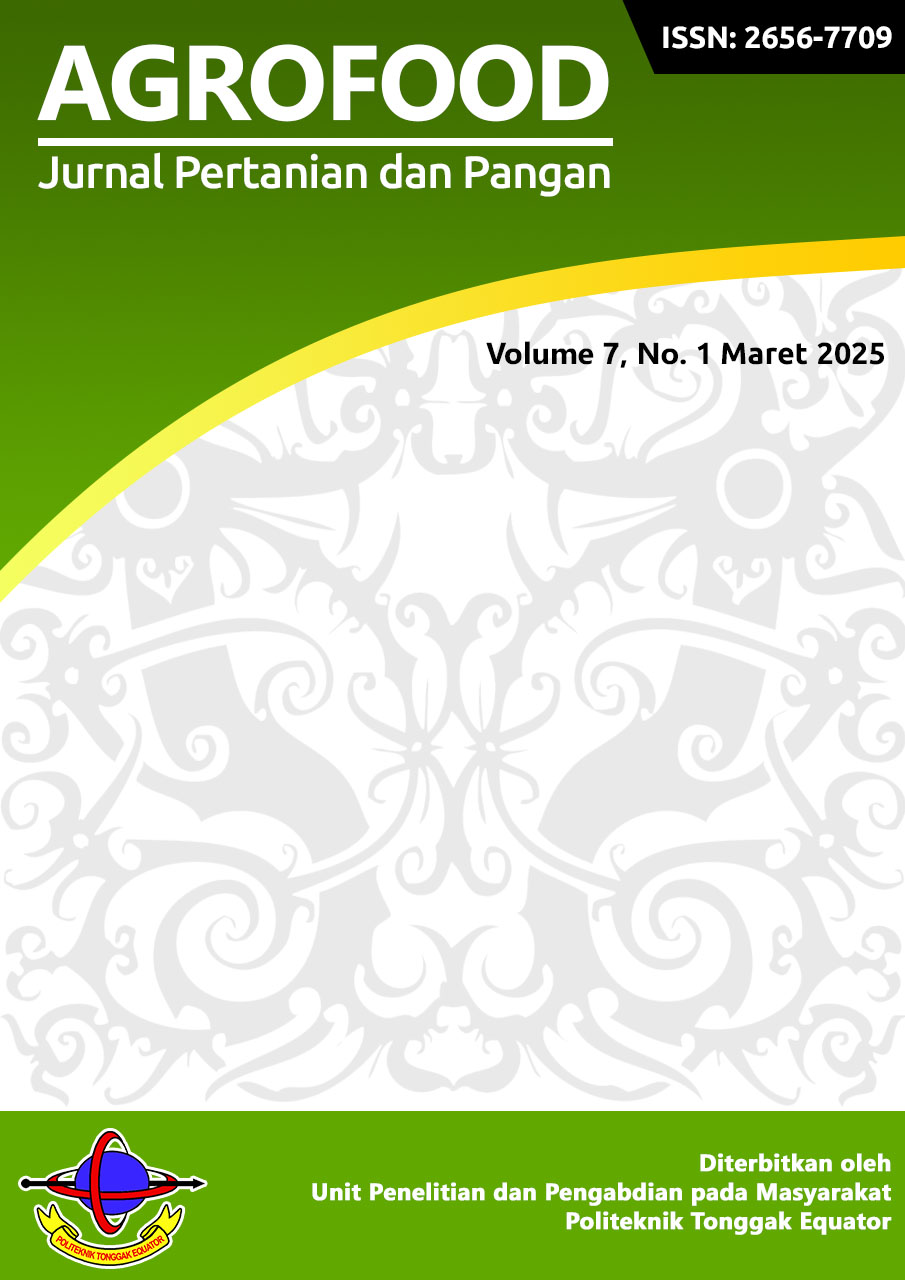PEMBUATAN SABUN CAIR MENGGUNAKAN MINYAK KELAPA (Coconut Oil) DENGAN VARIASI PERSENTASE EKSTRAK LIDAH BUAYA (Aloevera Barbadensis) DAN MINYAK NILAM
DOI:
https://doi.org/10.63848/agf.v07n1.2Keywords:
Tidal Land, Soybeans, Biofertilizer, NPK FertilizerAbstract
In West Kalimantan, soybean cultivation is still relatively low, yet there is a high market demand for it. Therefore, soybean production needs to be increased. The use of tidal land for soybean cultivation faces several challenges, one of which is soil fertility. This research aims to determine the effectiveness of using biofertilizer and NPK fertilizer and their impact on the growth and yield of soybeans in river tidal land. The research design is a factorial randomized block design. The first treatment is the dosage of biofertilizer with three levels: 5 ml/L of water, 10 ml/L of water, and 15 ml/L of water, while the second factor is the dosage of NPK fertilizer with three levels: 100 kg/ha, 125 kg/ha, and 150 kg/ha. Soybean growth and yield measurements include root volume measurement, the number of effective root nodules, plant dry weight, the number of pods per plant, pod weight per plant, and weight of 100 seeds per plant. Data were analyzed using analysis of variance (ANOVA), and if there were significant effects of each treatment or interactions between treatments, then an honest significant difference (HSD) test was conducted at a significance level of 5%. The use of biofertilizer in soybean cultivation on tidal land effectively reduces the required dosage of NPK fertilizer. There is good collaboration between biofertilizer and NPK fertilizer at the combination of 5 and 15 ml/L of water + 100 and 125 kg/ha, resulting in optimal soybean yield.






